Colonial Mexico Tour

Days 1&2: I flew from Los Angeles to Mexico City via Houston, Texas, on United Airlines. There are direct flights from LA to Mexico City, but on other airlines. Good decision as United upgraded me to first class on both flights––my first time ever flying in first class. Much turbulence on the flight to Houston, but being in first class did make it less stressful.
I took a 9–day Gate 1 Colonial Mexico Tour. The map shows the major places that we visited but we also visited other colonial towns. It was a great tour. Is it safe to travel in Mexico? All the places that we went to were safe for us to be in. I’ve been to Mexico many times but not to most of the places on this tour, a number that I had never even heard of beforehand. So a trip of new discoveries. We had 42 people on the tour, all Americans, and a great tour director, Lilianna. All of our hotels were beautiful, and I would say, first class. There were overcast skies with some drizzle in Mexico City but all other days were warm and sunny.

Colonial Mexico Tour
Paseo de la Reforma
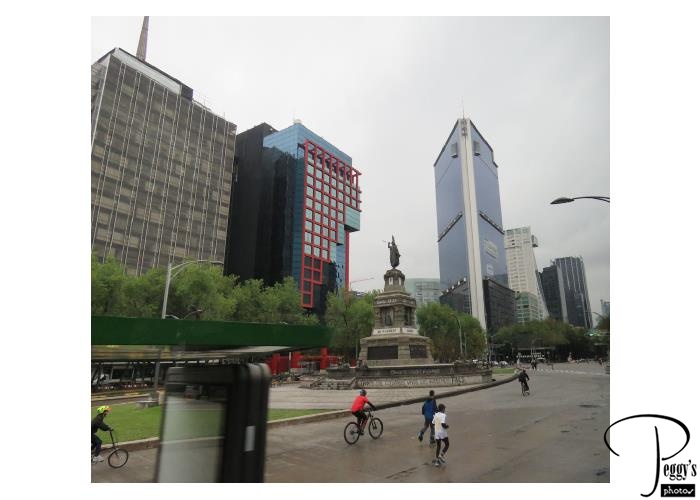
Day 2. We had a very busy day today. We started out from our hotel driving on the Paseo de la Reforma, the main street in Mexico City. It is modern and has many monuments along it.

Paseo de la Reforma
Estado de Mexico
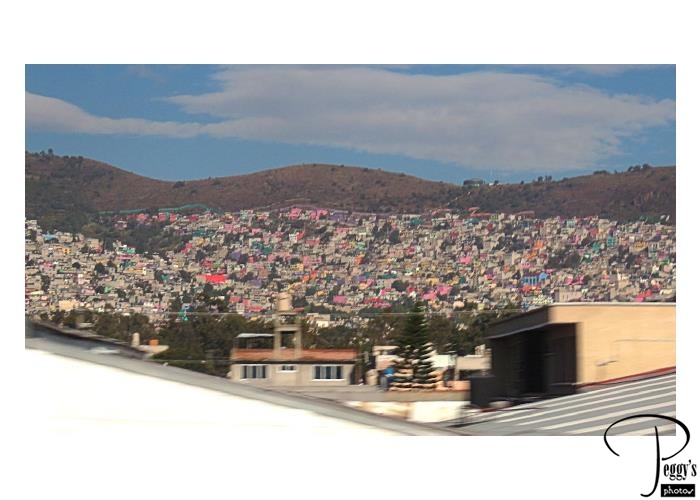
Not too far from Mexico City, we drove through an area that my tour director, Liliana, said was called Estado de Mexico, which had very colorful houses on both sides of the highway. Quite a sight. However, she also told me that it would not be safe to go there on your own as it is like the favelas in Rio where uninvited guests are not welcome.

Estado de Mexico
La Calavara Catrina
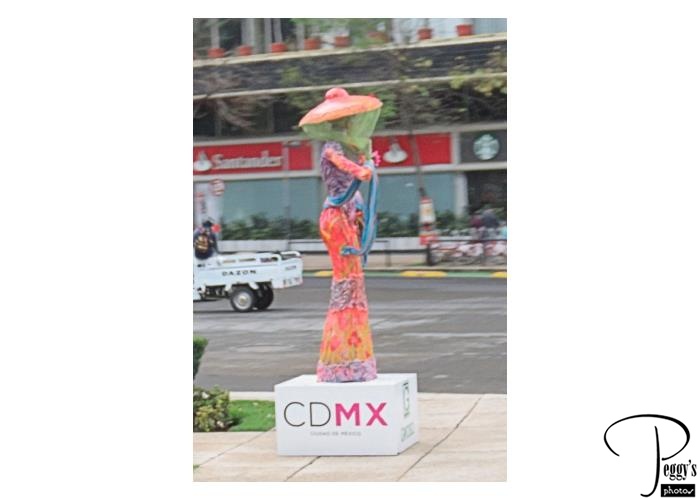
The Day of the Dead is celebrated in Mexico from October 31 through November 1, but the decorations to celebrate it were still up when we were there on November 3–11. The photo shows a Calavera Catrina (“calveras” represent human skulls, of which the Las Catrinas have for their heads), the idea of which was created in the early 1900s by a lithographer who didn’t agree with the aristocratic European style of dress Mexican women were wearing at that time and was trying to make fun of it. But the La Catrina figure caught on and is one of the figures that you see often in Day of the Dead decorations. There were a number of La Catrinas along the Paseo de la Reforma.

La Calavara Catrina
Alebrijes
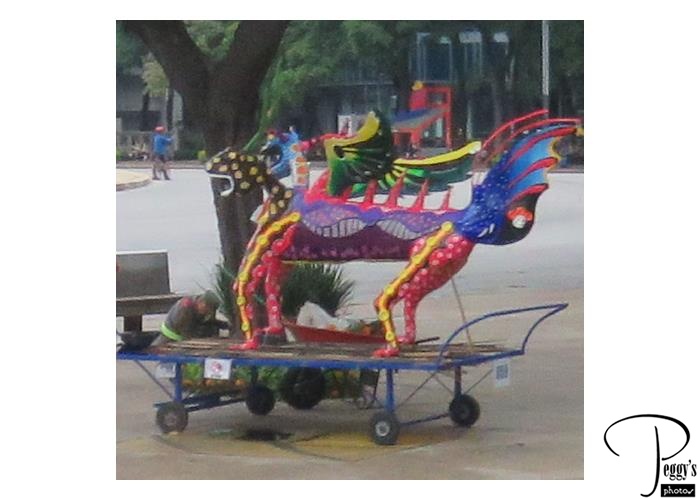
At the end of October, there is a La Noche de los Alebrijes parade that honors Mexican handicrafts and folk art. The fantastic figures in the parade are called alebrijes. After the parade, the alebrijes line the Paseo de la Reforma and there were quite a large number of them on display.

Alebrijes
Coyoacan
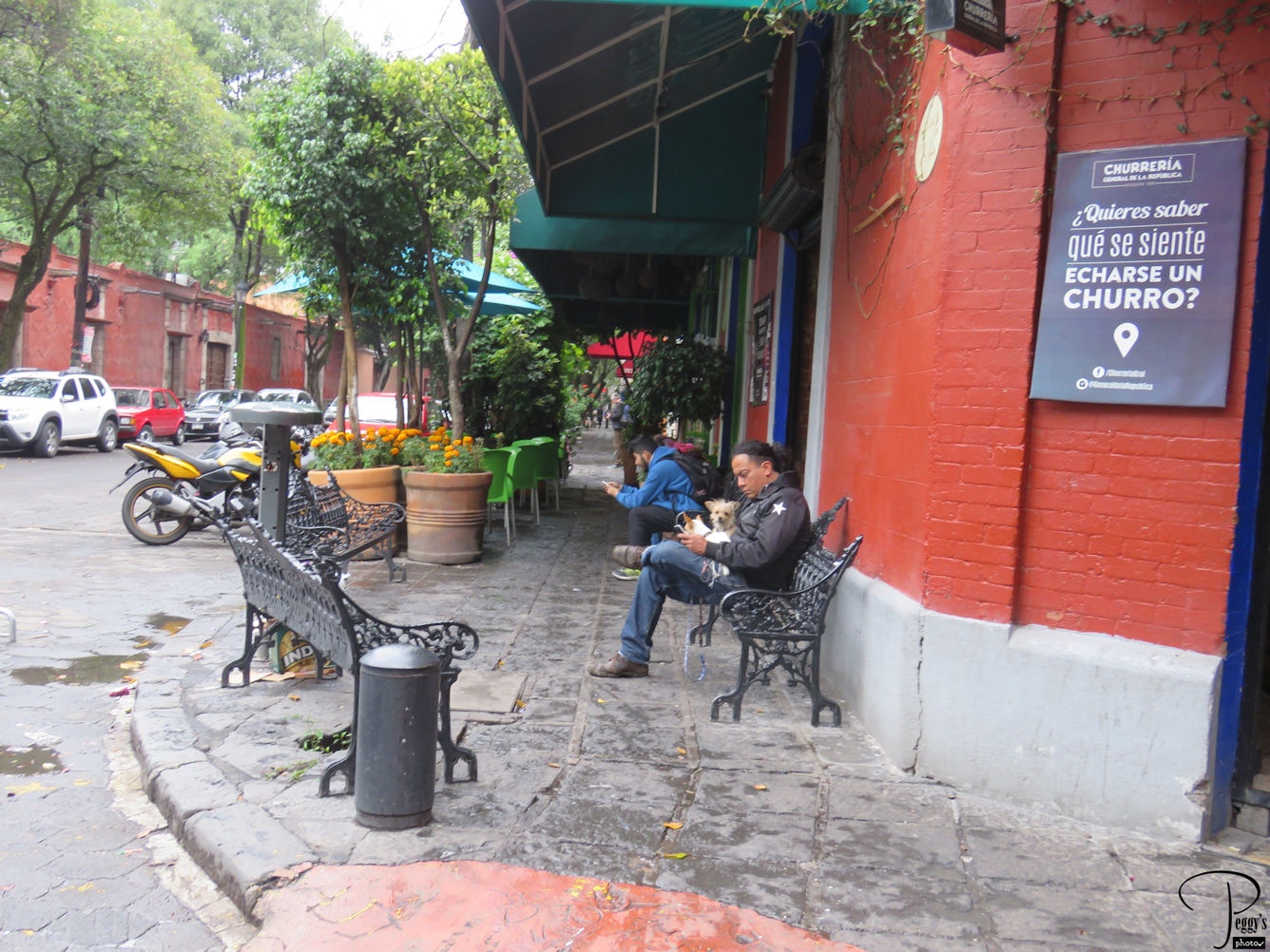
Our first stop was at Coyoacan, a neighborhood of Mexico City.

Coyoacan
Coyoacan–Day of the Dead Altars
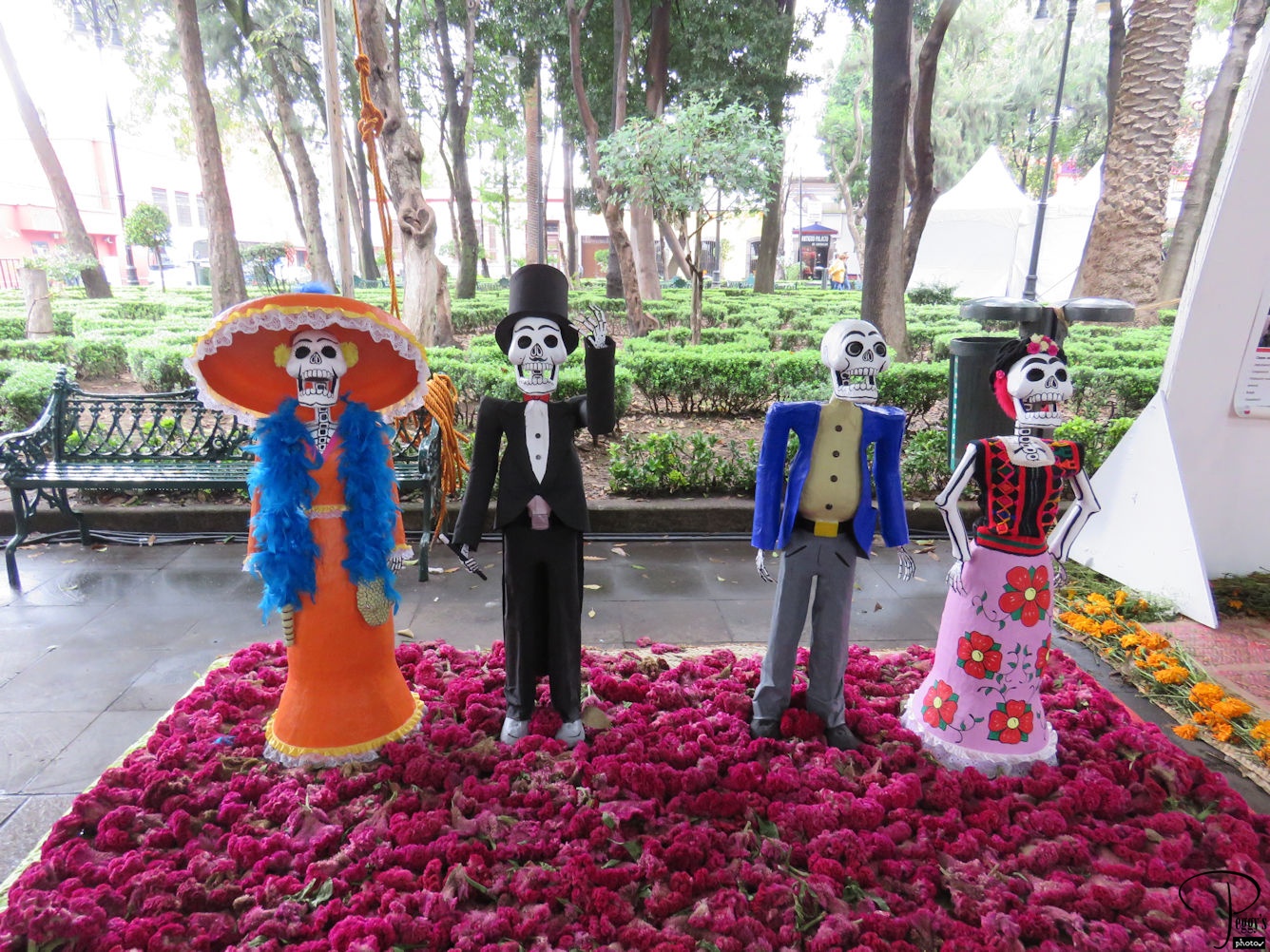
We walked past the Day of the Dead altars, called “ofrendas.” The altars are to remember family members and others who have died. The La Catrinas in the display are accompanied by men dressed up in as fine clothes as they are.

Coyoacan–Day of the Dead Altars
Coyoacan–Day of the Dead Altars
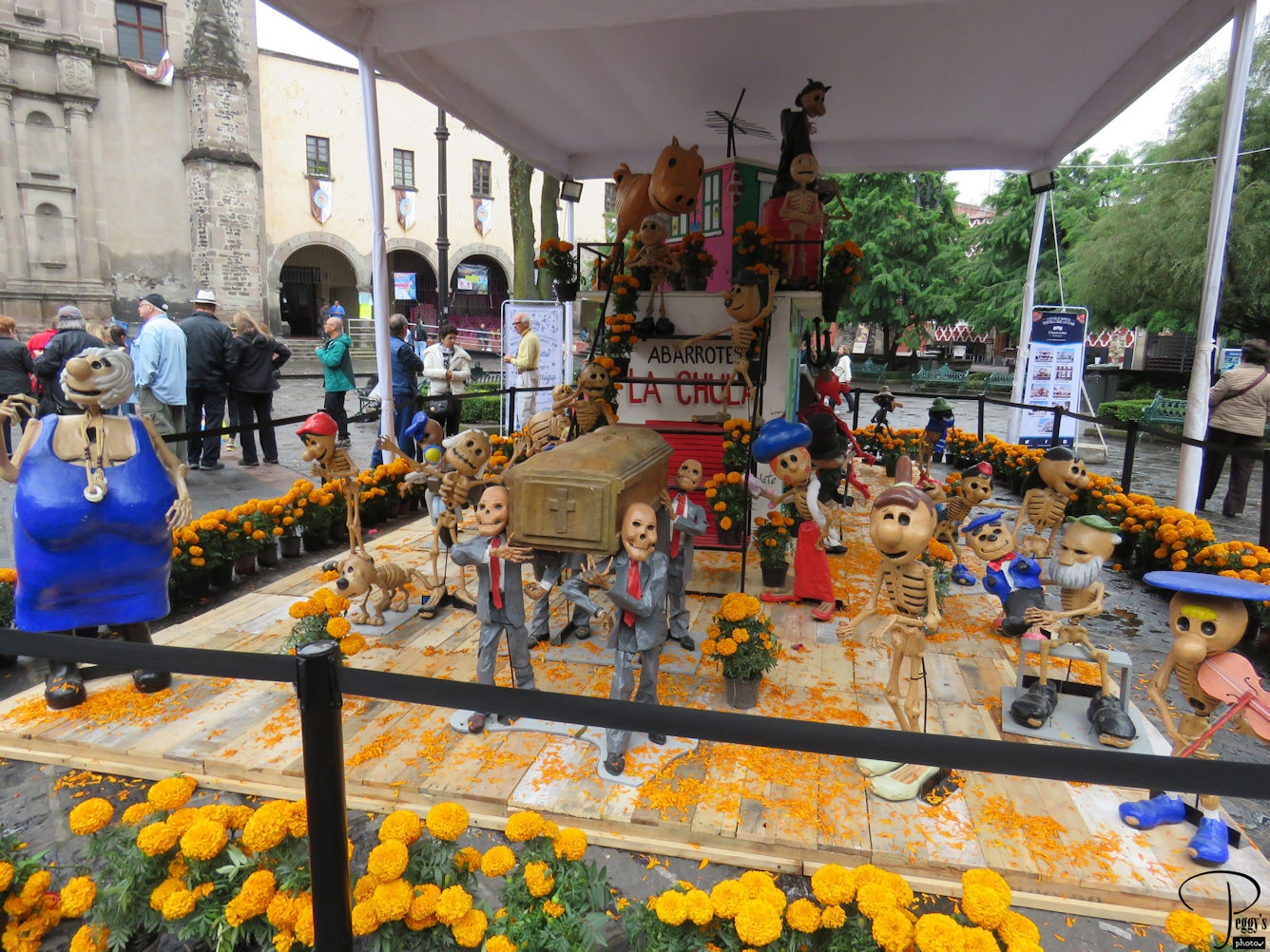
There was many altars here, including this very large one.

Coyoacan–Day of the Dead Altars
Coyoacan–Day of the Dead
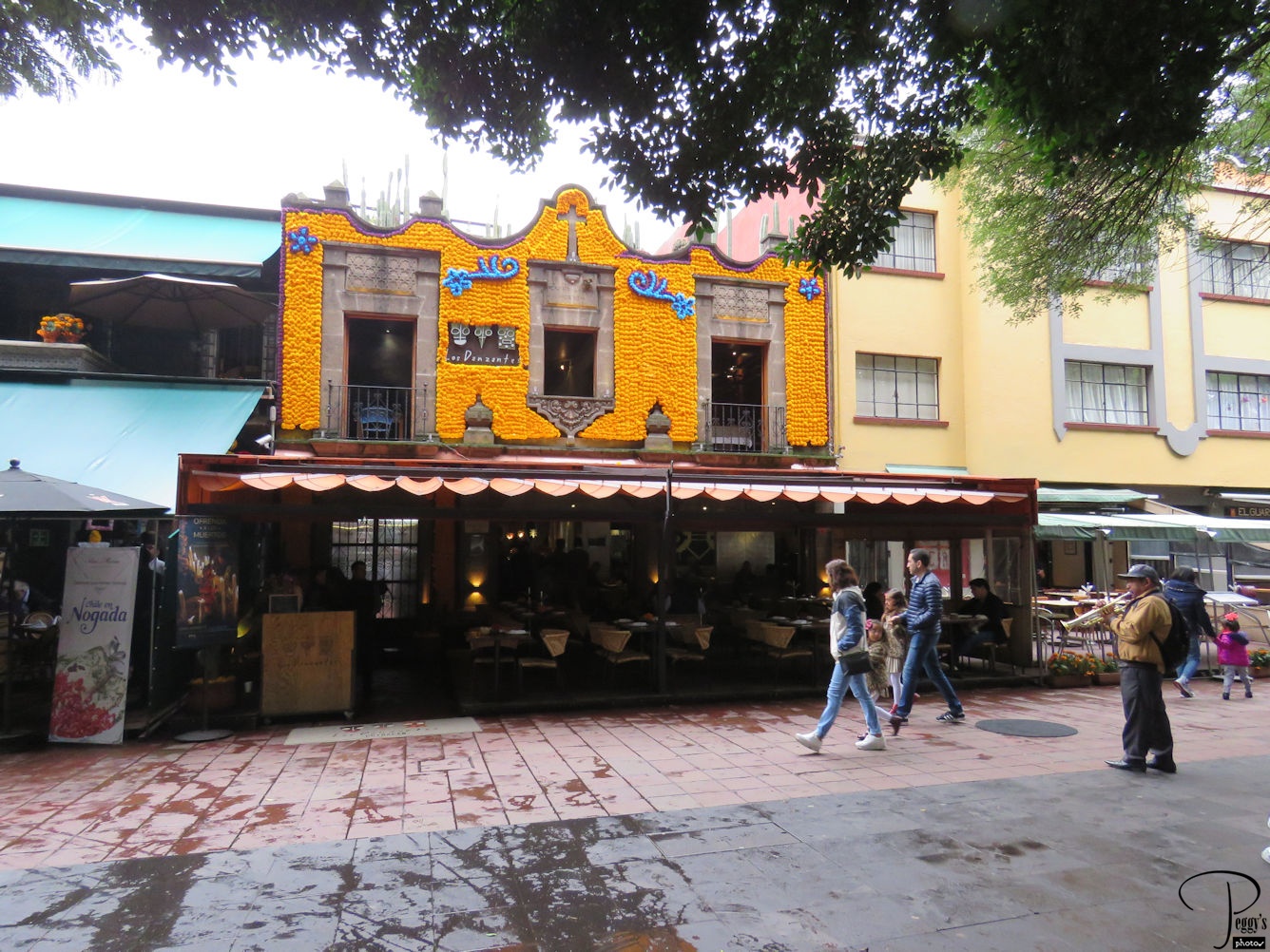
The Day of the Dead flower is the Mexican orange marigold––the flor de muertos. This building is covered in orange marigolds.
The Day of the Dead is a Mexican holiday, dating back to pre–Colombian times, but the Day of the Dead is celebrated in a number of cities in the United States that have a large Mexican population such as Los Angeles. It is also celebrated in other Hispanic countries.
I have put the Coyoacan Day of the Dead decorations on a slideshow. Go to http://www.peggysphotos.com/coyoacan–dia–de–muertos/ (Slide Shows, Central America, Colonial Mexico Tour, Mexico City, “Coyoacan:Dia de Muertos”).

Coyoacan–Day of the Dead
Museo Frida Kahlo
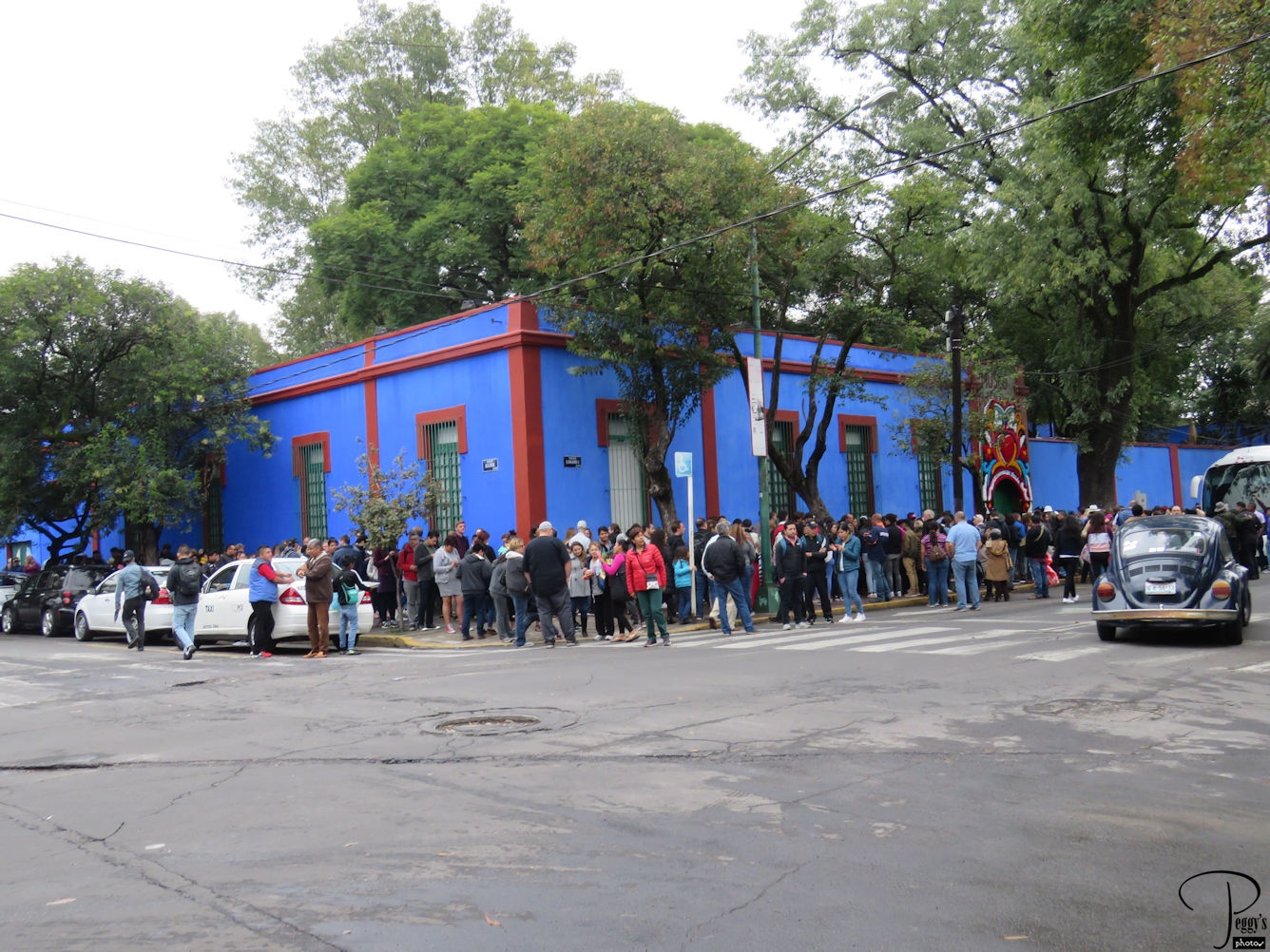
We walked from the plaza in Coyoacan to the Museo Frida Kahlo. The photo is of the Blue House (La Casa Azul), in which the Mexican artist Frida Kahlo was born and also died. She also lived here with the great Mexican artist Diego Rivera.

Museo Frida Kahlo
Museo Frida Kahlo
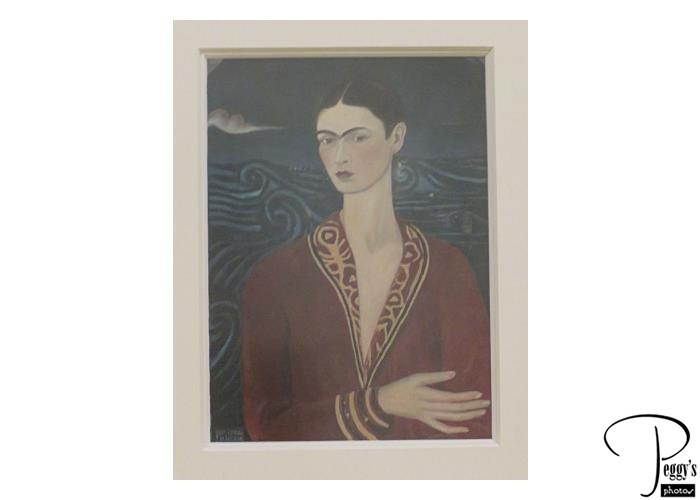
In the museum is a collection of artwork by Frida Kahlo and Diego Rivera and others, Mexican folk art, pre–Hispanic artifacts, photographs, memorabilia, and personal items. There is so much in the museum that it would very worth renting audio tape earphones so that you don’t miss anything. The photo shows a painting by Frida, “Self–Portrait in Velvet Dress.”

Museo Frida Kahlo
Diego Rivera Painting
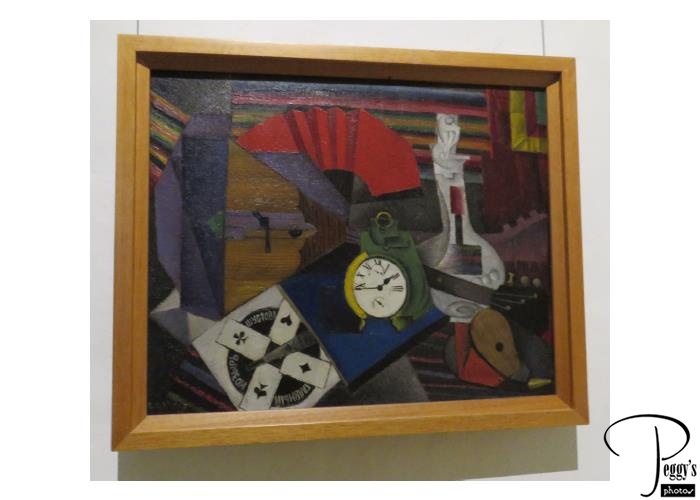
Diego Rivera met Picasso in Paris in 1914, and in Paris, Rivera started painting in the cubism style. Here is one of his cubism paintings. Diego is usually associated with his murals of Mexican people and events.

Diego Rivera Painting
Museo Frida Kahlo
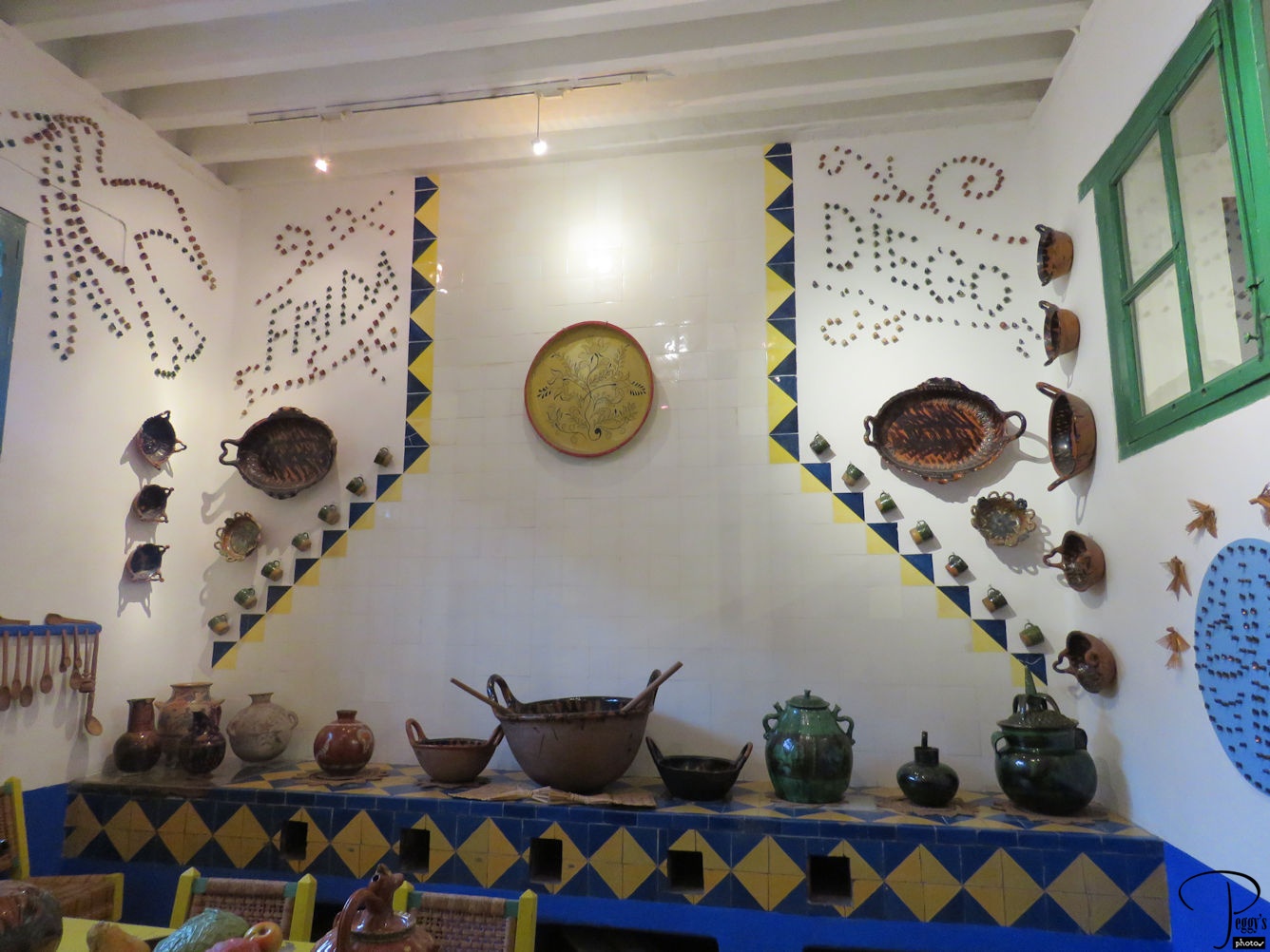
There are 10 rooms to explore in the Blue House. This is a photo of the kitchen.

Museo Frida Kahlo
Museo Frida Kahlo
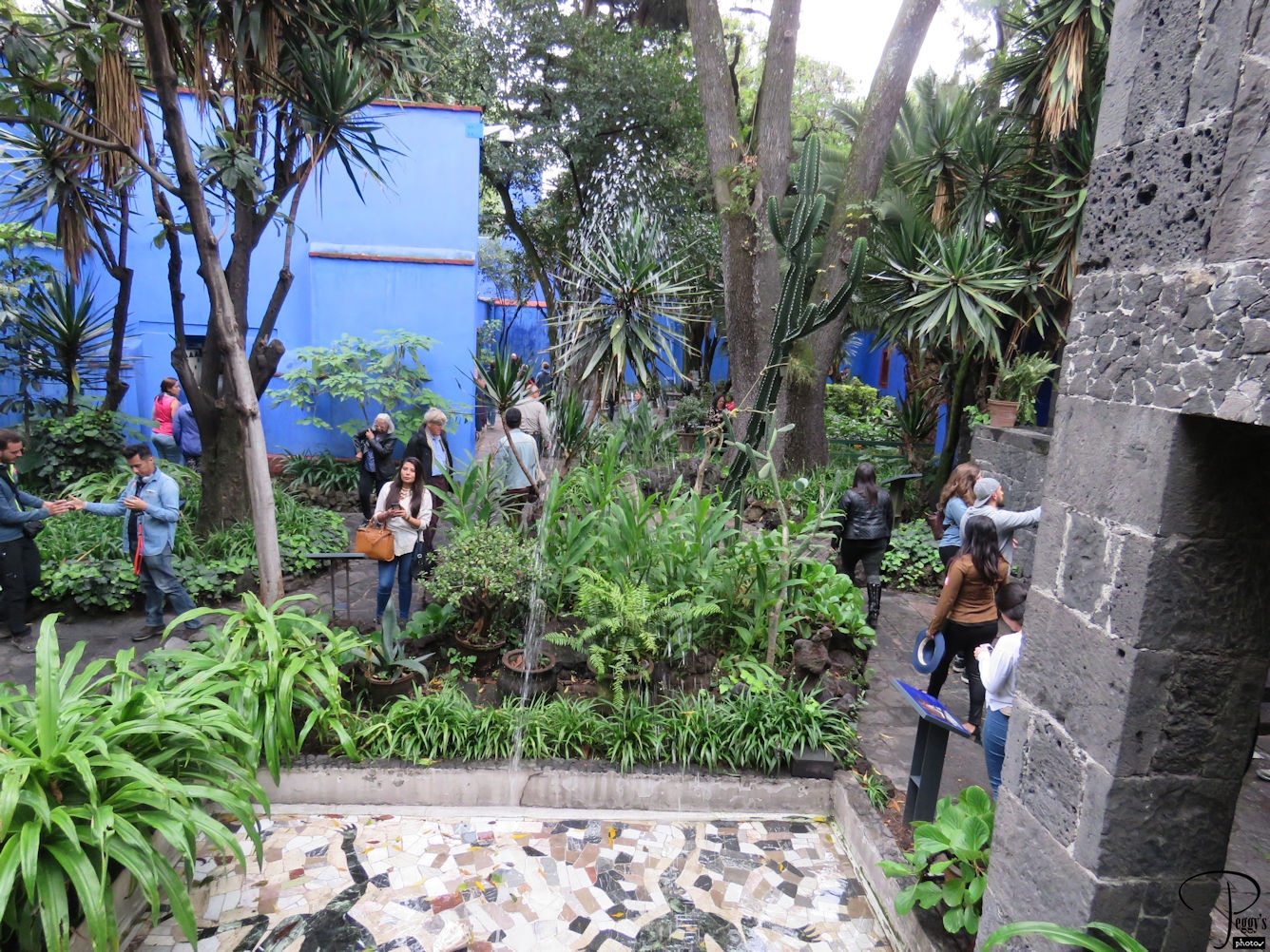
A view of the outside of the Blue House.
I have put my photos of the Museo Frida Kahlo on a slideshow. Go to http://www.peggysphotos.com/museo–frida–kahlo/ (Slide Shows, Central America, Mexico, Colonial Mexico Tour, “Museo Frida Kahlo”).

Museo Frida Kahlo
Colorful Mexico
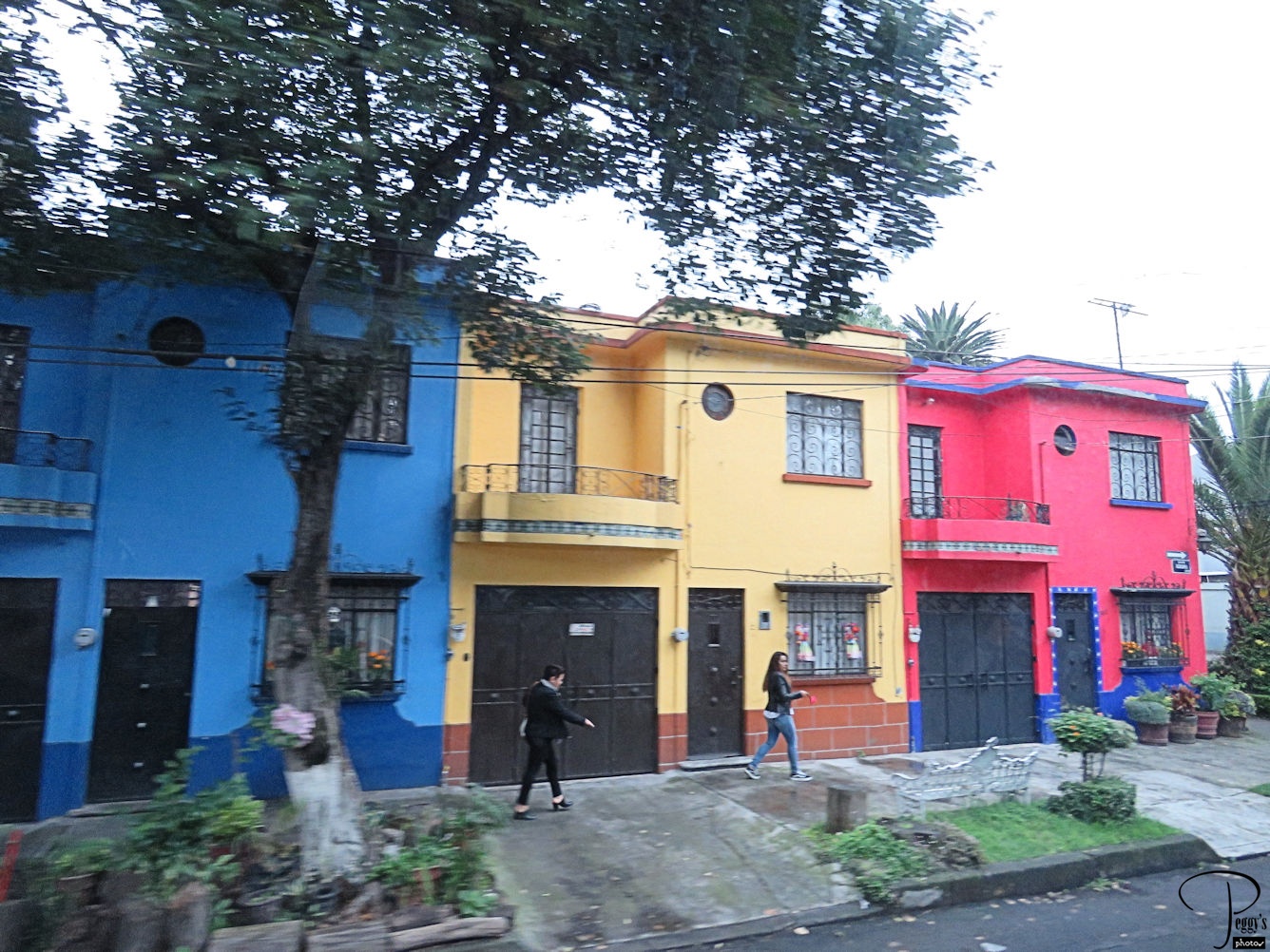
We passed many colorful buildings on our way to our next stop. Not all of Mexico City is First World, much of it Third World or in between, but it is colorful.

Colorful Mexico
Sidewalk Cafe
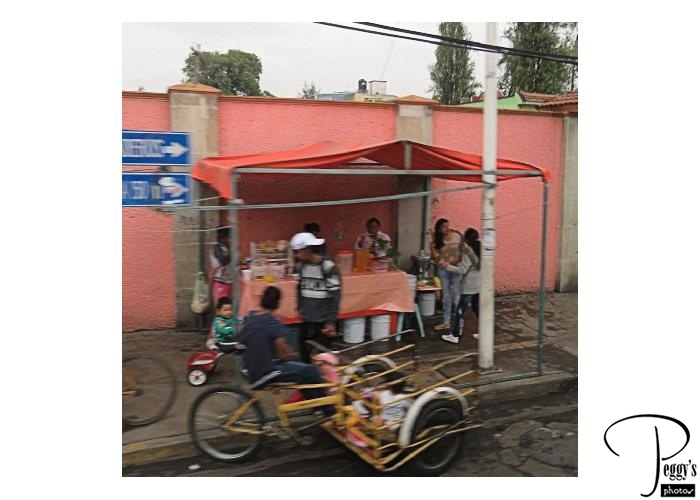
A sidewalk cafe that we passed. There are many vendors in Mexico City, including many food vendors.

Sidewalk Cafe
Birria La Chivacoa
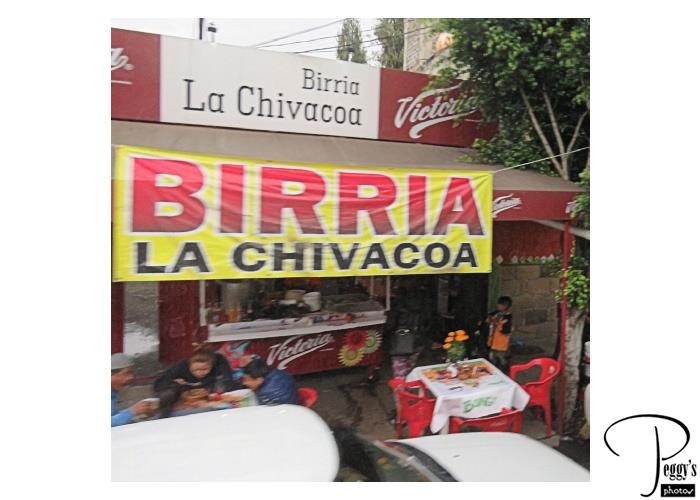
A more established sidewalk cafe.

Birria La Chivacoa
Colorful Building
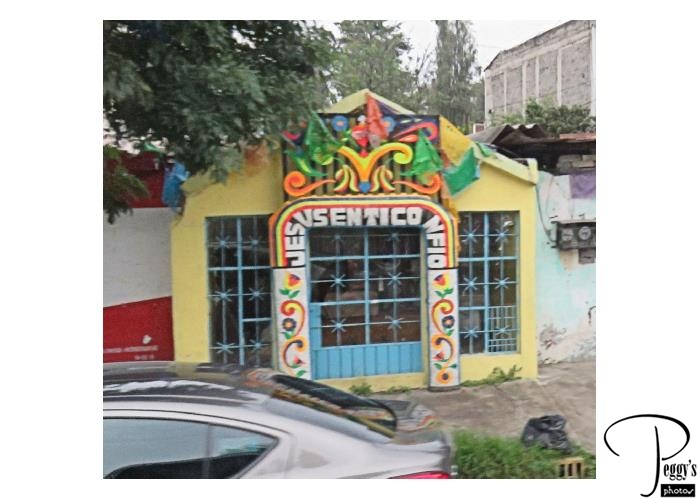
Another colorful building.

Colorful Building
Another Cafe
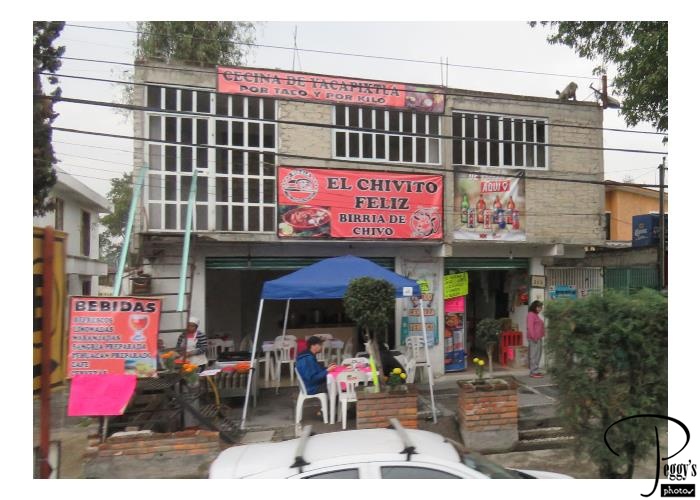
And another cafe.

Another Cafe
An Old Church
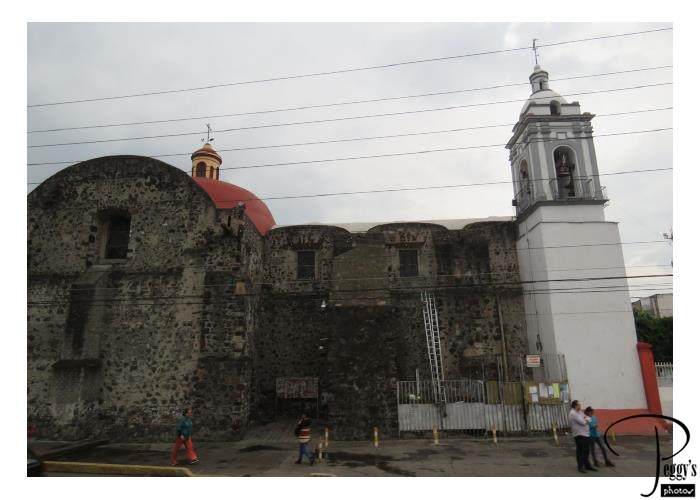
There are numerous old churches in both Mexico City and in the other cities and areas that we visited.

An Old Church
Another Old Church
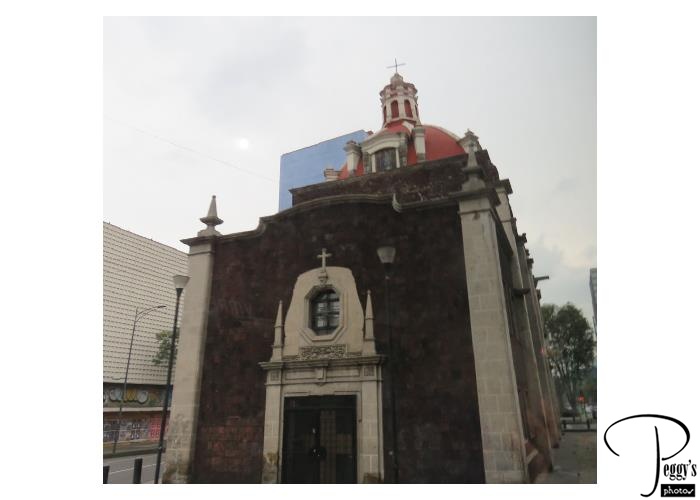
Another old church seen on our drive.

Another Old Church
A Mural
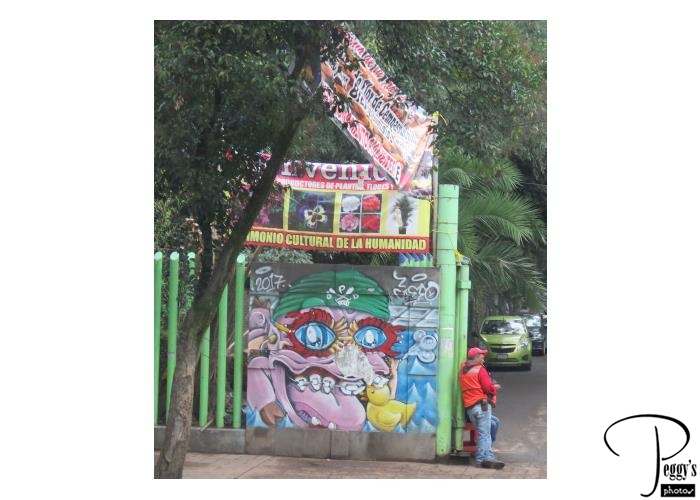
You also see many murals while you are driving around Mexico City.

A Mural
Xochimilco
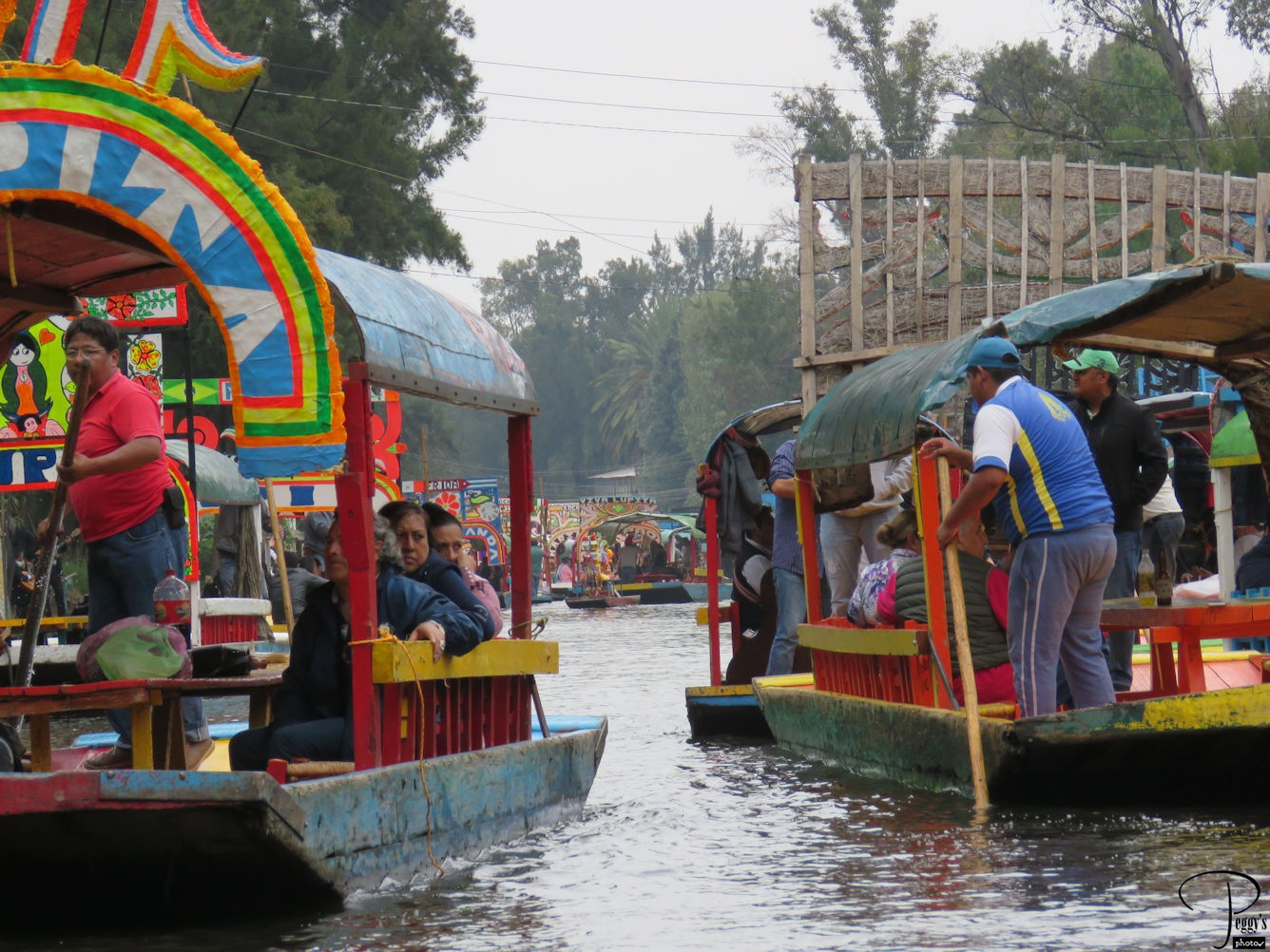
Our next stop was at Xochimilco in Mexico City. Here, we boarded a decorated boat for a ride on the Xochimilco canals. The canals today are those left from what was an extensive lake and canal system that connected settlements in the Valley of Mexico in historic times. We also ate a Mexican lunch on the boat.

Xochimilco
Xochimilco–MOVIE
A movie as we made our way through the canals.
Youtube: https://youtu.be/zQL8Ke3ykEw

Xochimilco–MOVIE
Xochimilico Vendor
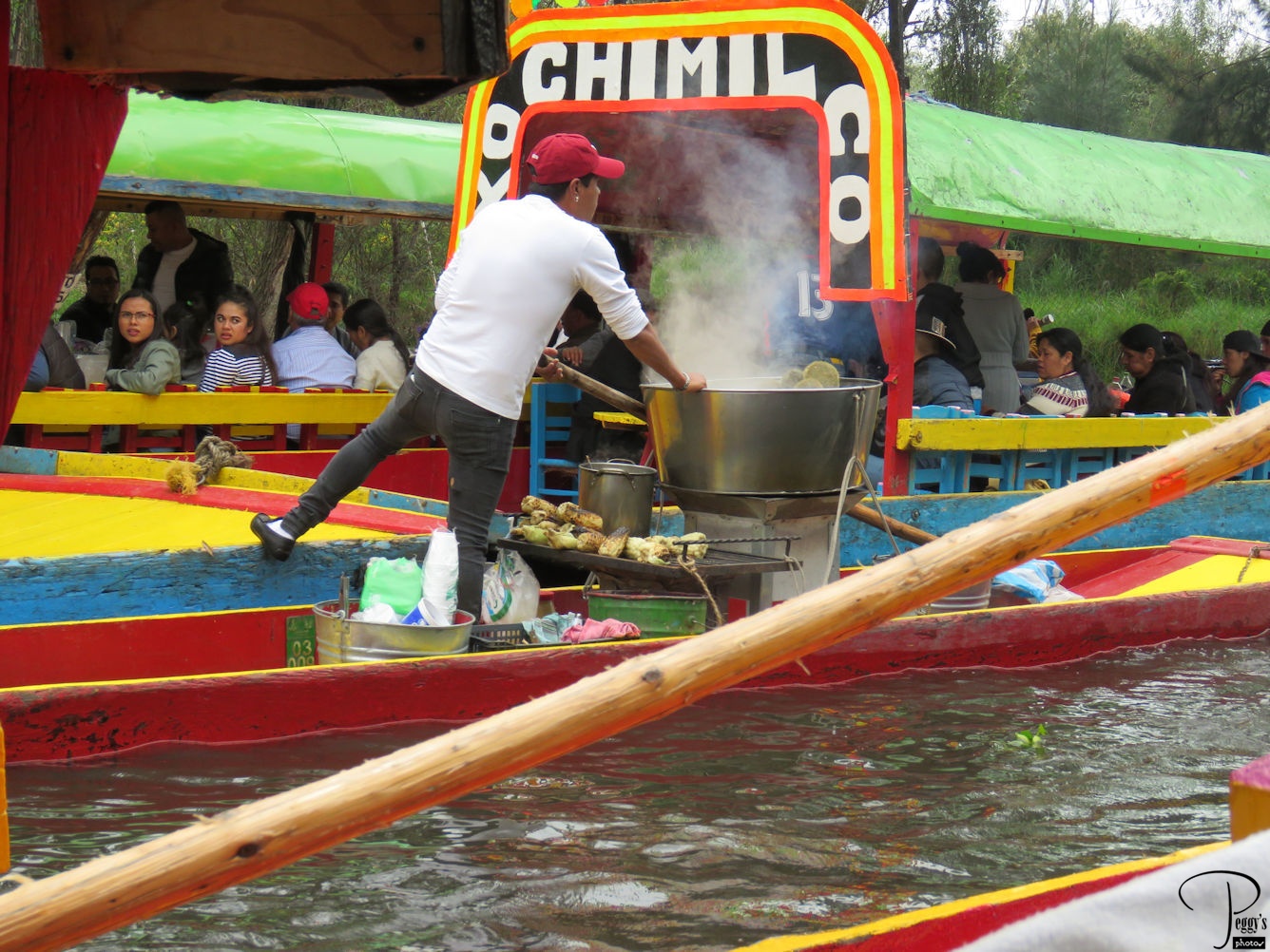
There are also many vendors along the canals, selling food, flower headdresses, and other souvenirs. This young man is selling steamed corn.

Xochimilico Vendor
Xochimilco Mariachis–MOVIE
Mariachis that you can hire to sing ply the canals. Our tour director, Liliana, hired these mariachis. She chose as the song for them to sing and play “Guadalajara,” the city in which she lives. You will see both Liliana and our local guide, Maria, in the movie.
Youtube: https://youtu.be/CYHb5BImjpc
I have put my photos of Xochimilco on a slideshow. Go to http://www.peggysphotos.com/xochimilco/ (Slide Shows, Central America, Mexico, Colonial Mexico Tour, “Xochimilco”).

Xochimilco Mariachis–MOVIE
Museo Mural Diego Rivera
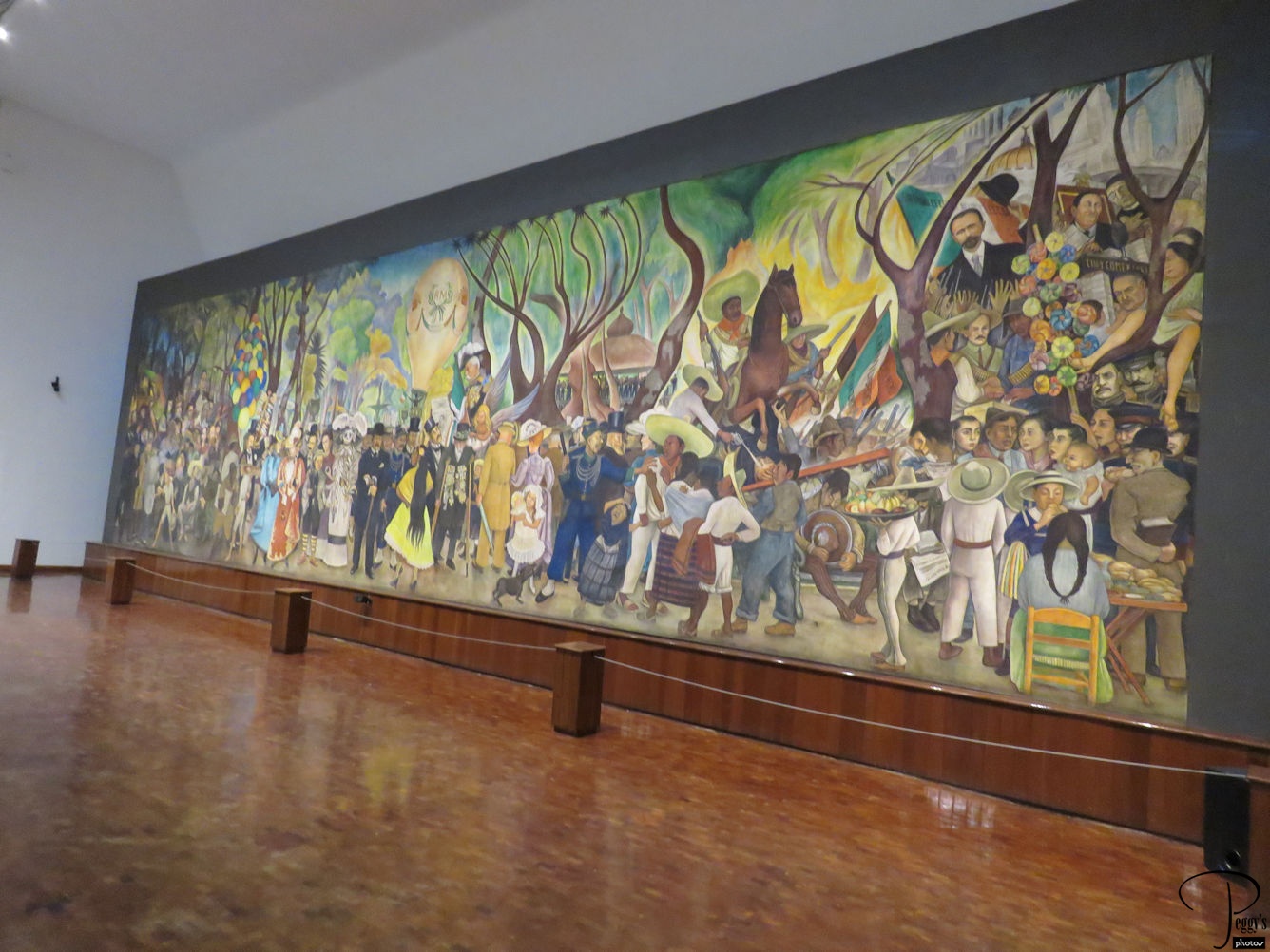
Our next stop was at the Museo Mural Diego Rivera to view his “Sueno de una Tarde Dominical en la Alameda Central” (“Dream of a Sunday Afternoon in the Alameda Central”). The mural was created in 1947 for the Del Prado Hotel’s dining room. It was moved to the museum after being severely damaged in the 1985 Mexico City earthquake.

Museo Mural Diego Rivera
Templo Mayor
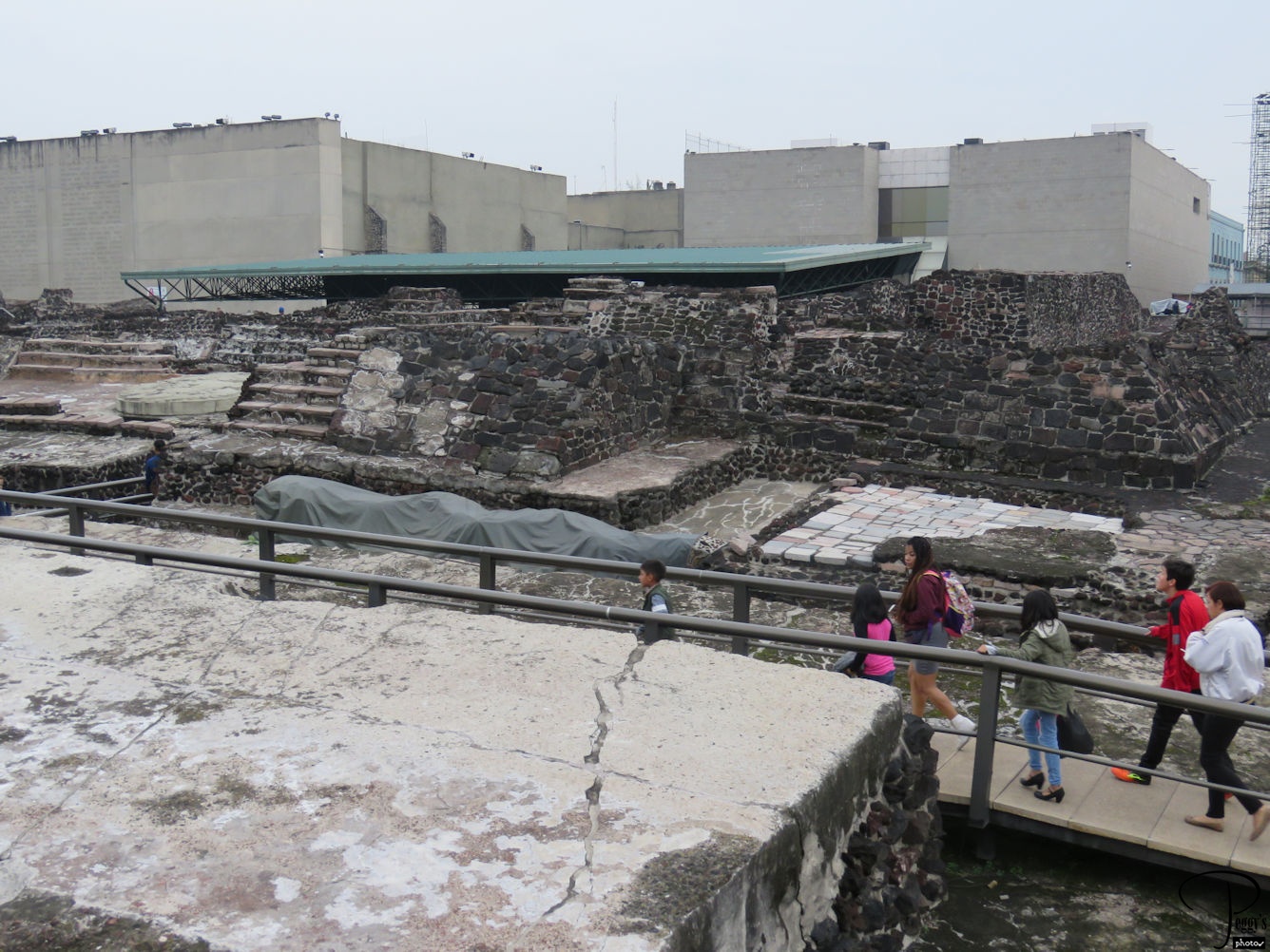
Our next stop was at Templo Mayor, which was the main temple of the Mexica People in their capital city of Tenochtitlan, which is now Mexico City. The first temple was begun sometime after 1325. The temple was destroyed by the Spanish in 1521 to make room for the new cathedral, which is directly across from the temple.

Templo Mayor
Catedral Metropolitana
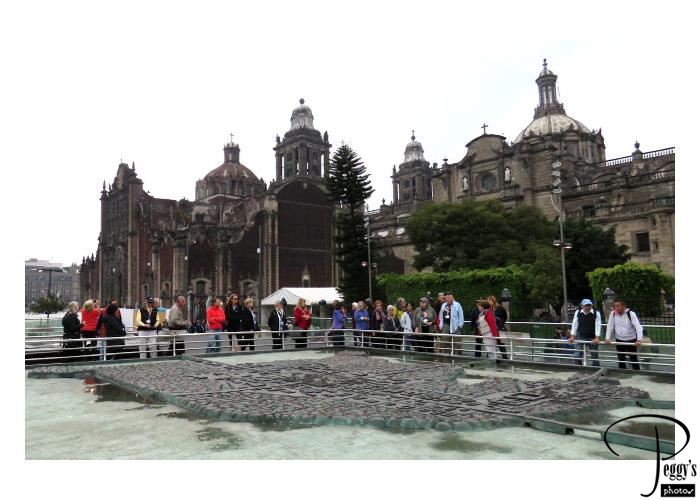
Across from the ruins of Templo Mayor is the Metropolitan Cathedral of the Assumption of the Most Blessed Virgin Mary into Heavens (Catedral Metropolitana). It was consecrated in 1656 and completed in 1813.

Catedral Metropolitana
Catedral Metropolitana
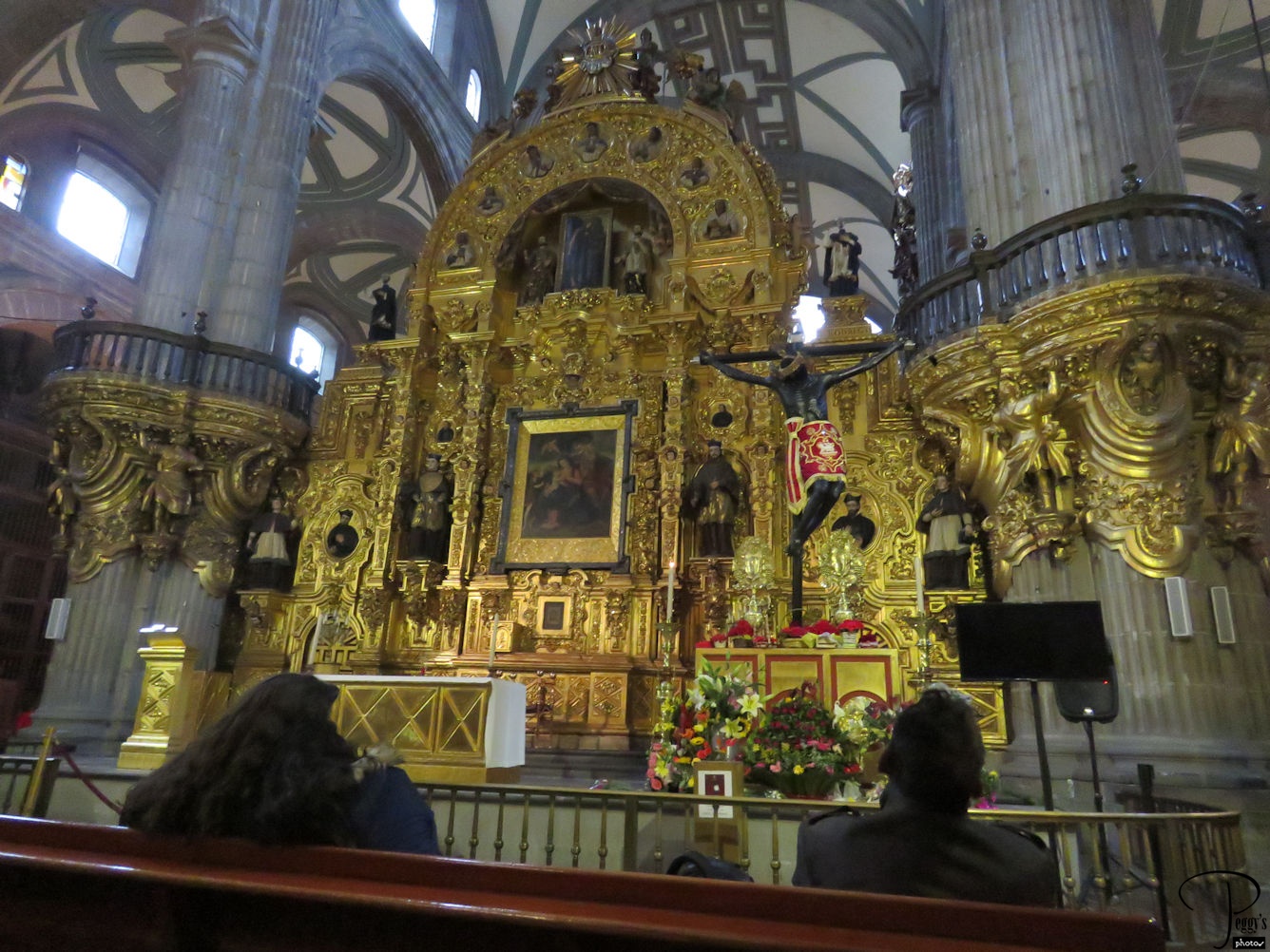
Inside the cathedral.

Catedral Metropolitana
National Palace
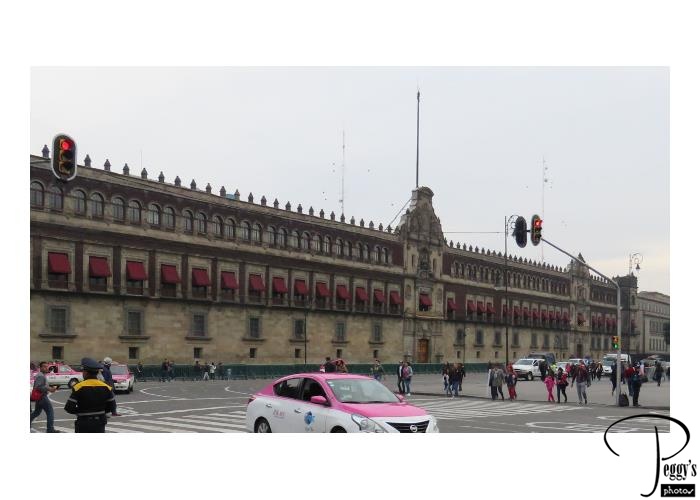
The Catedral Metropolitana borders the Zocalo, the main square in Mexico City, as well as does the National Palace, the seat of the federal government.

National Palace
Zocalo
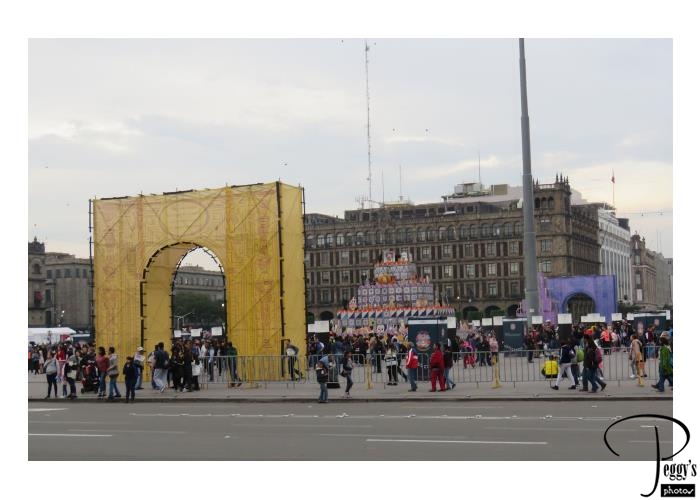
The Zocalo was full of Day of the Dead decorations.

Zocalo
Purification Ceremonies
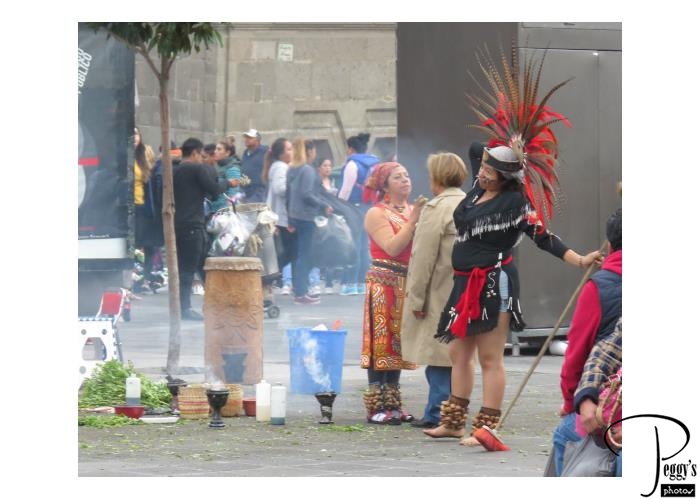
Purification, healing, and cleansing ceremonies were being held both on the side of the cathedral and in the Zocalo, the main square. A shaman covers a person being cleansed with smoke, hence smoke in the photo. In the photo, a woman shaman is conducting a purification ceremony.

Purification Ceremonies
Casa de los Azulejos
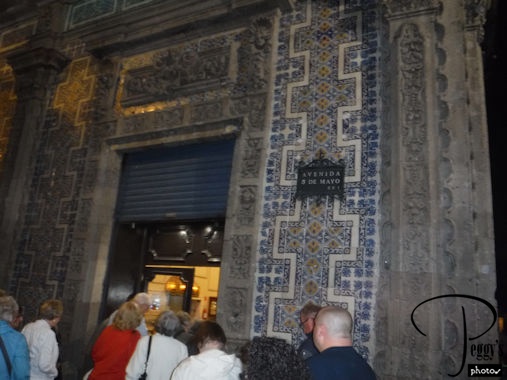
This evening, we had a group dinner at Sanborns. In 1919, Sanborns bought the 16th–century the Casa de los Azulejos (the House of Tiles) to serve as a restaurant. The house was originally built in 1793 but was later remodeled, adding blue and white tiles from Puebla to its exterior. The tiles were added by Countess del Valle de Orizaba to show her great wealth or by a son who was told by the Count del Valle that if he didn’t change his ways he would “never build his house of tiles,” meaning that “he would never amount to anything.” In defiance, the son, who inherited the house, put the tiles on it.

Casa de los Azulejos
Casa de los Azulejos
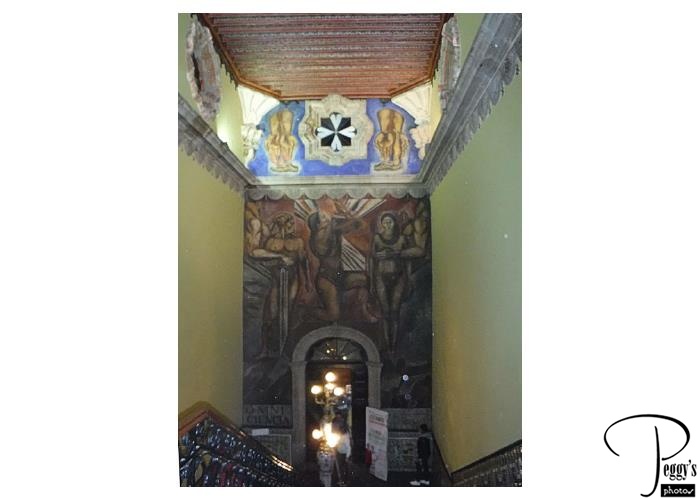
The main staircase with one of the earliest works by the famed Mexican muralist Jose Clemante Orozco.
I have put my photos of sights in Mexico City on a slideshow. Go to http://www.peggysphotos.com/sights–in–mexico–city/ (Slide Shows, Central America, Mexico, Colonial Mexico Tour, “Sights in Mexico City”).
